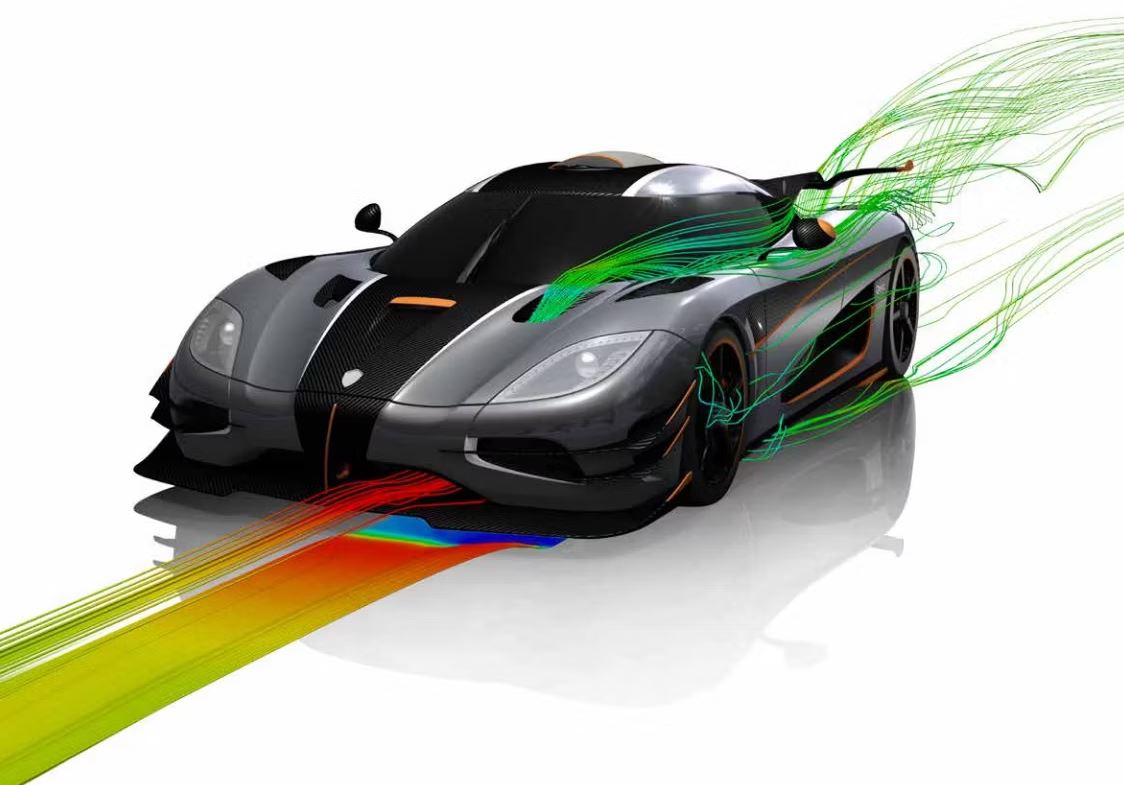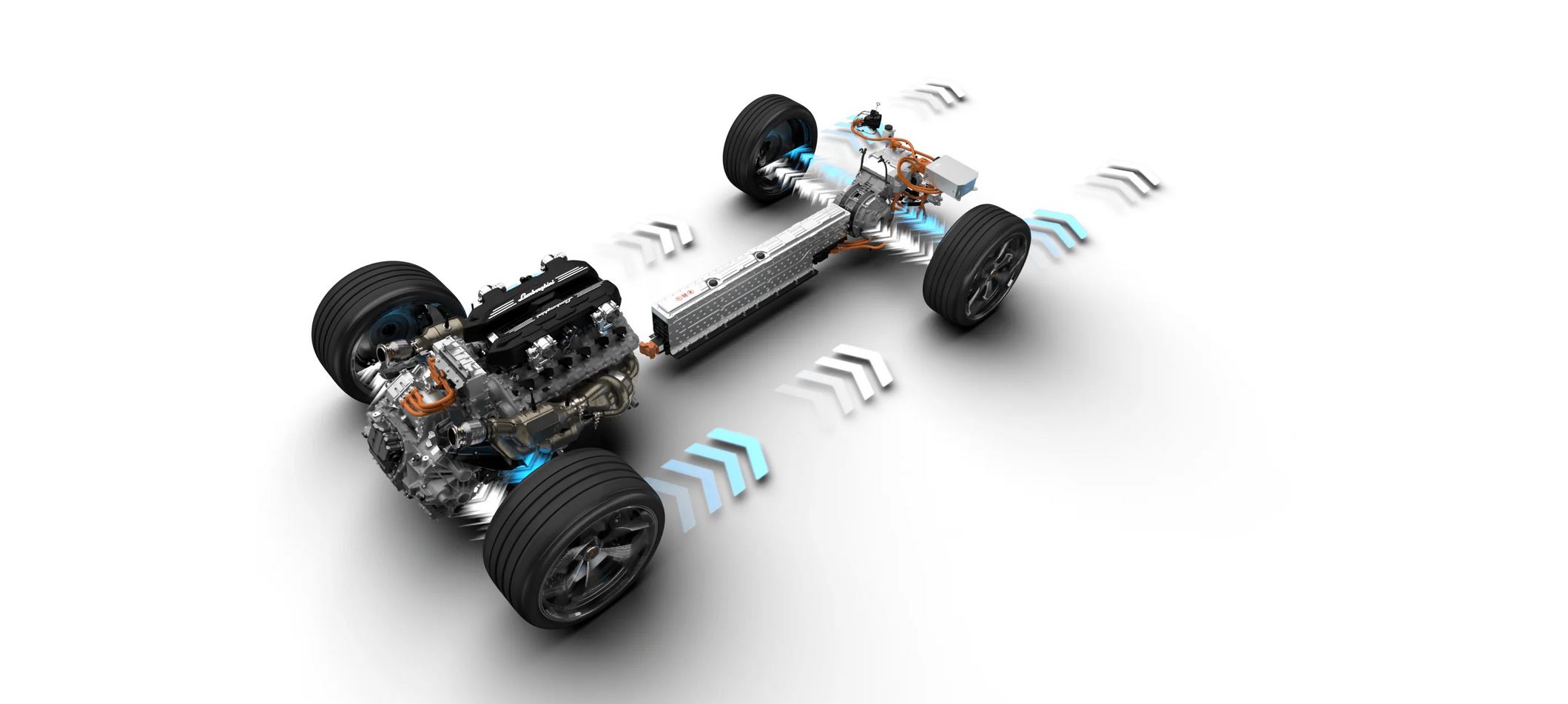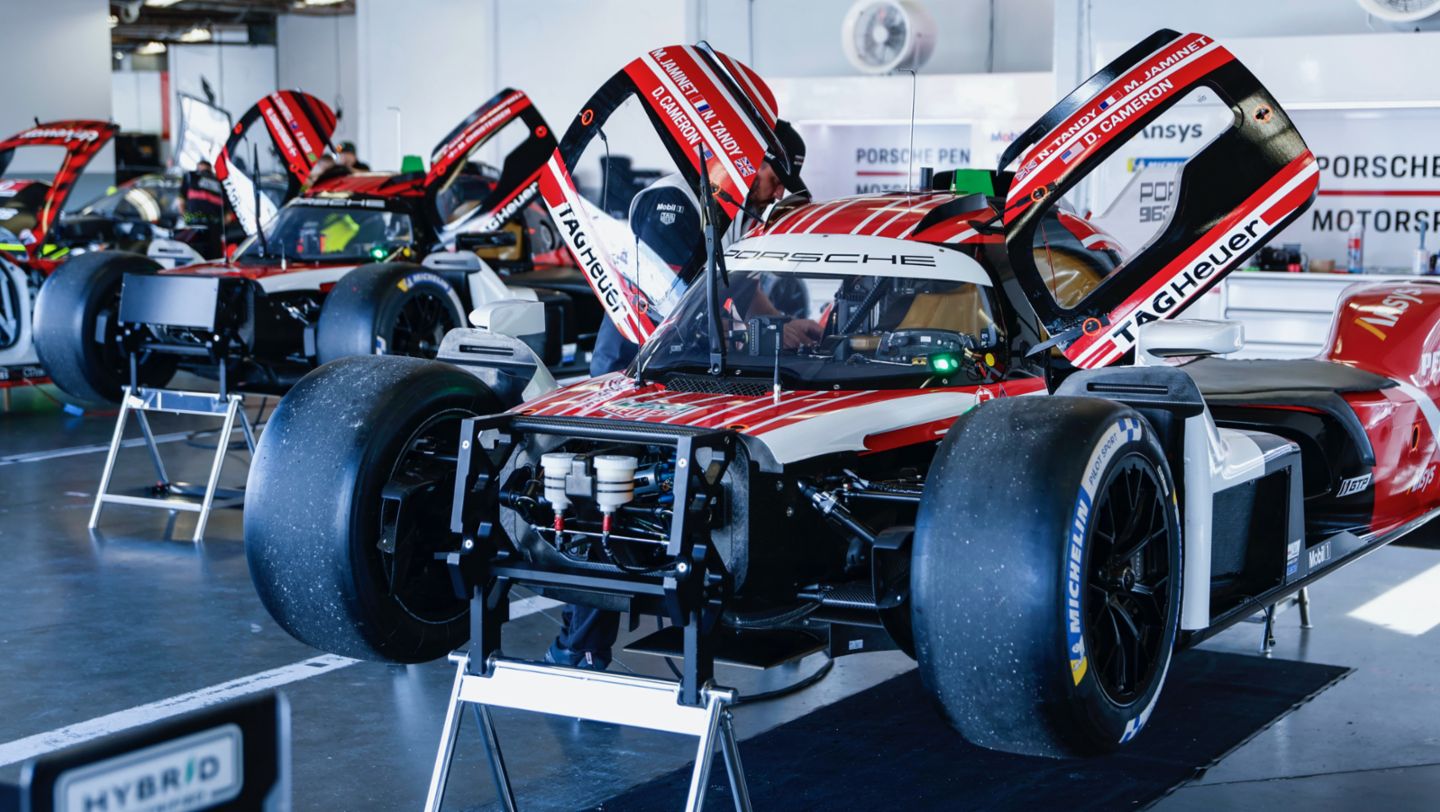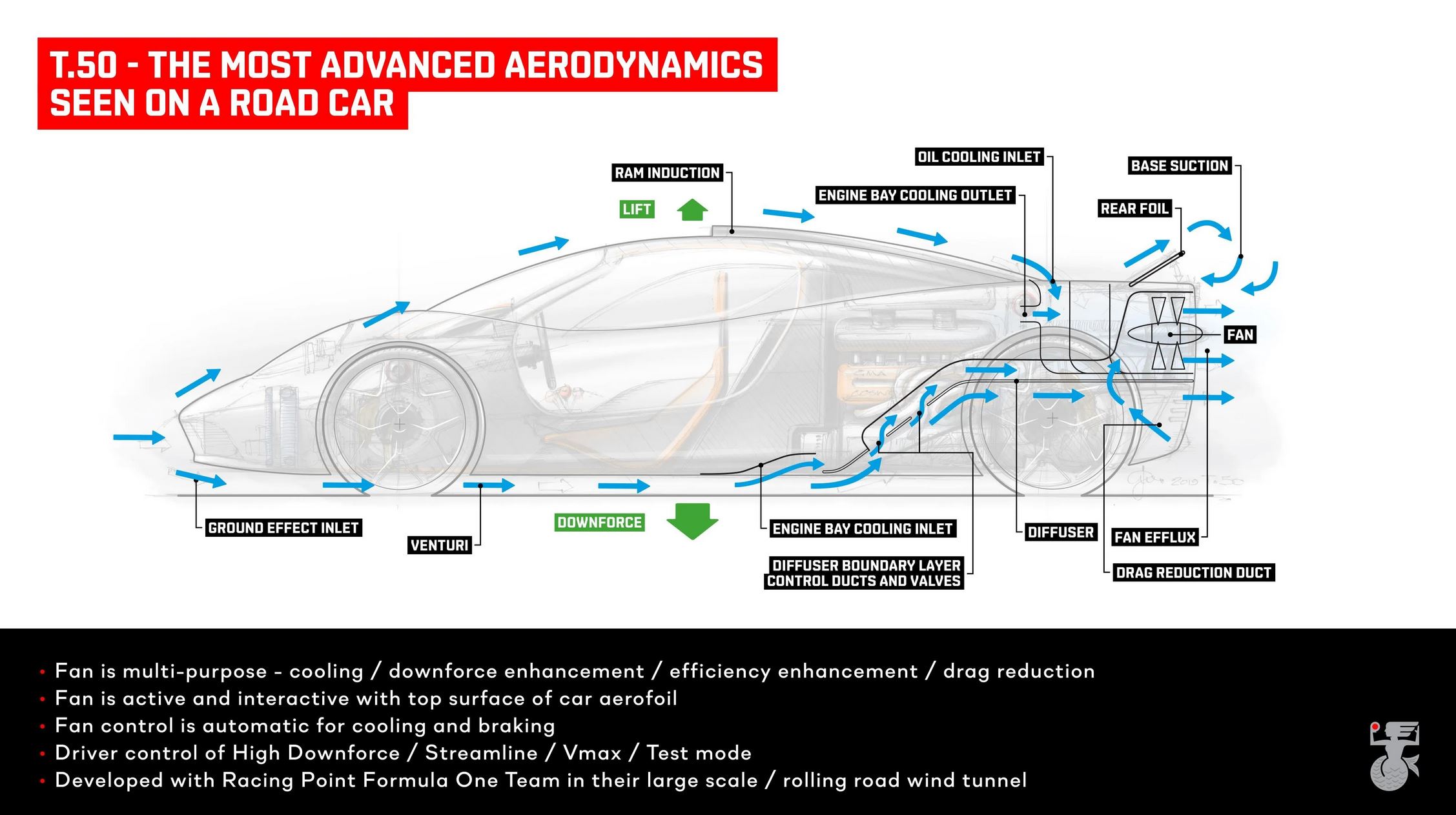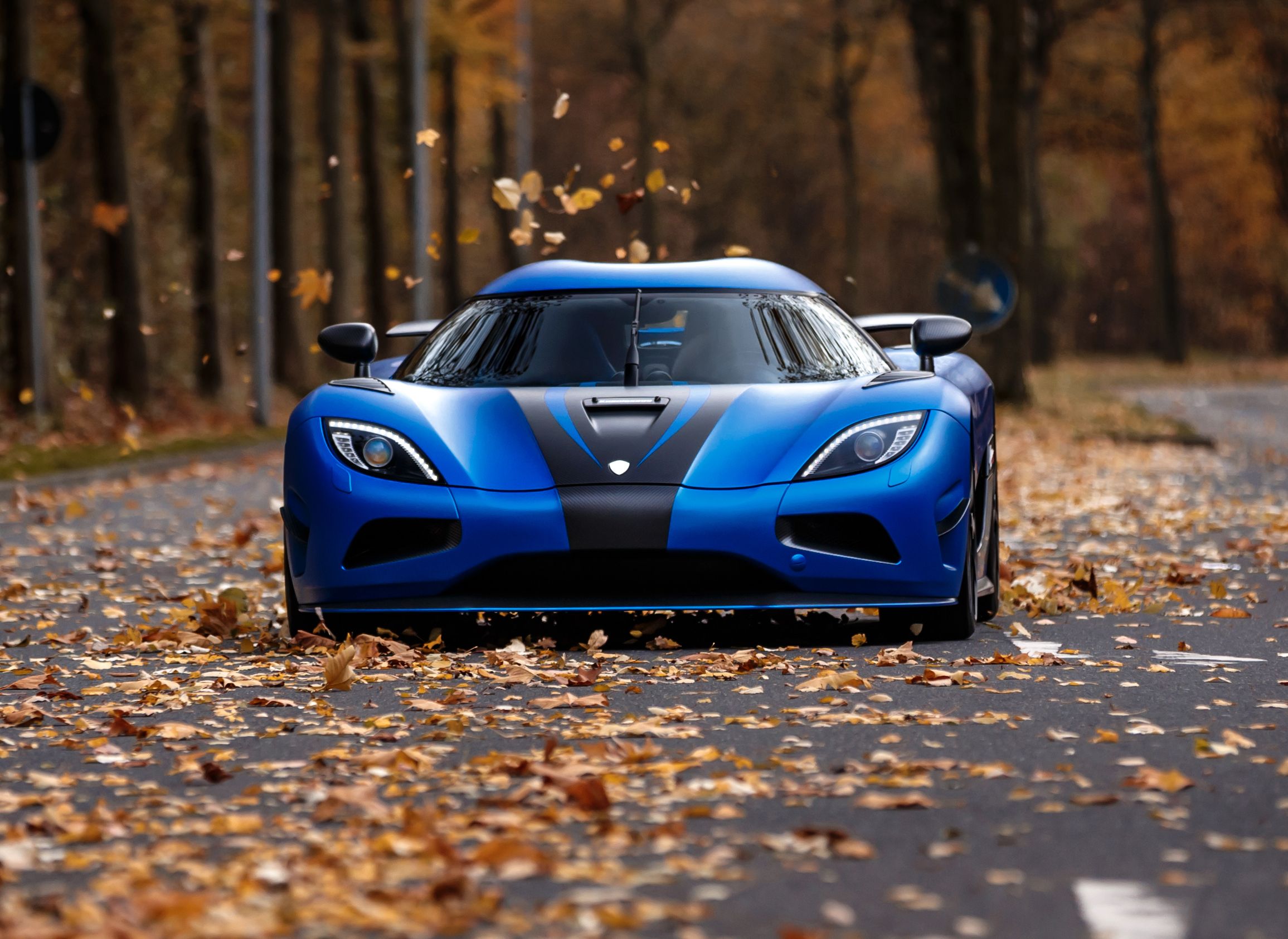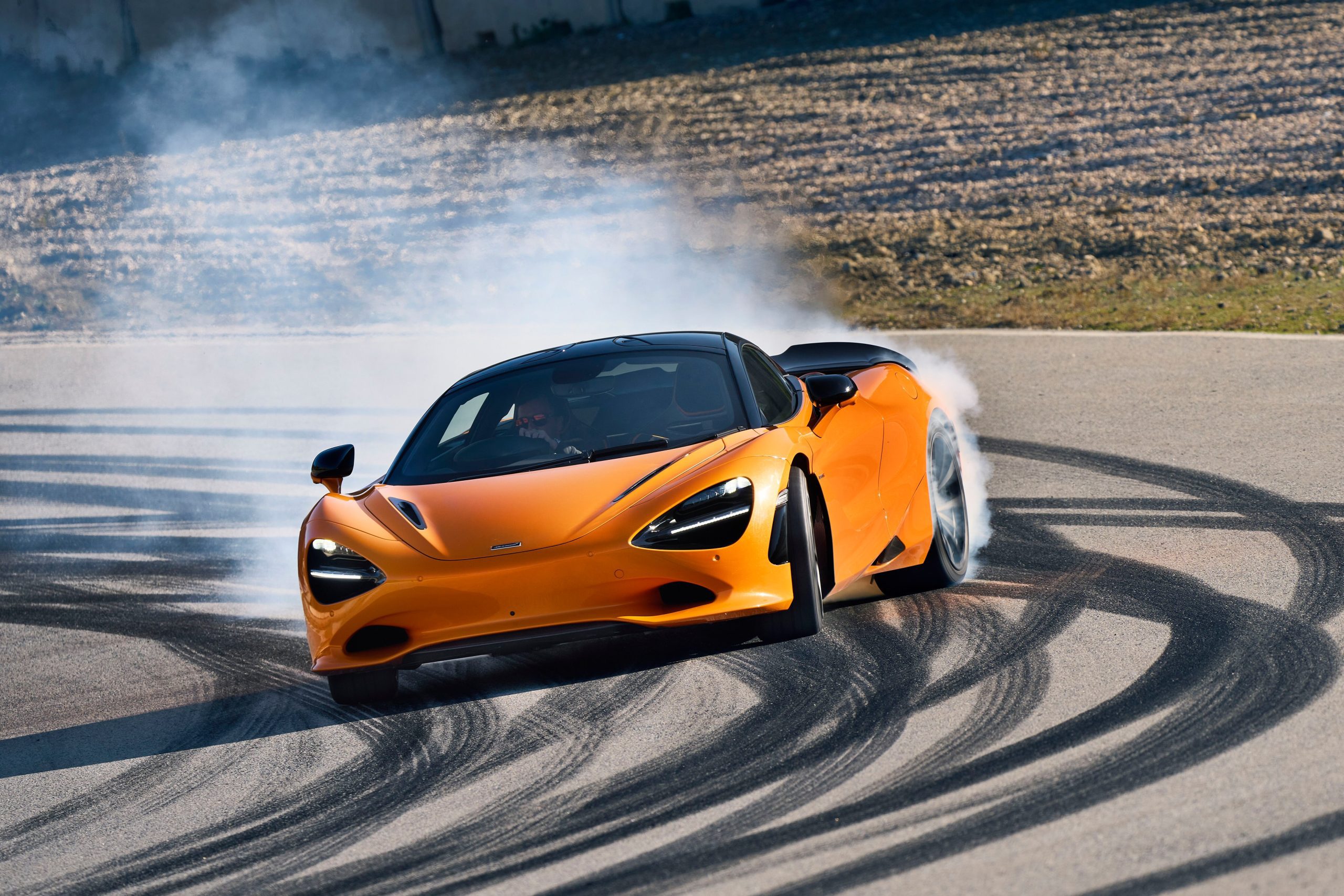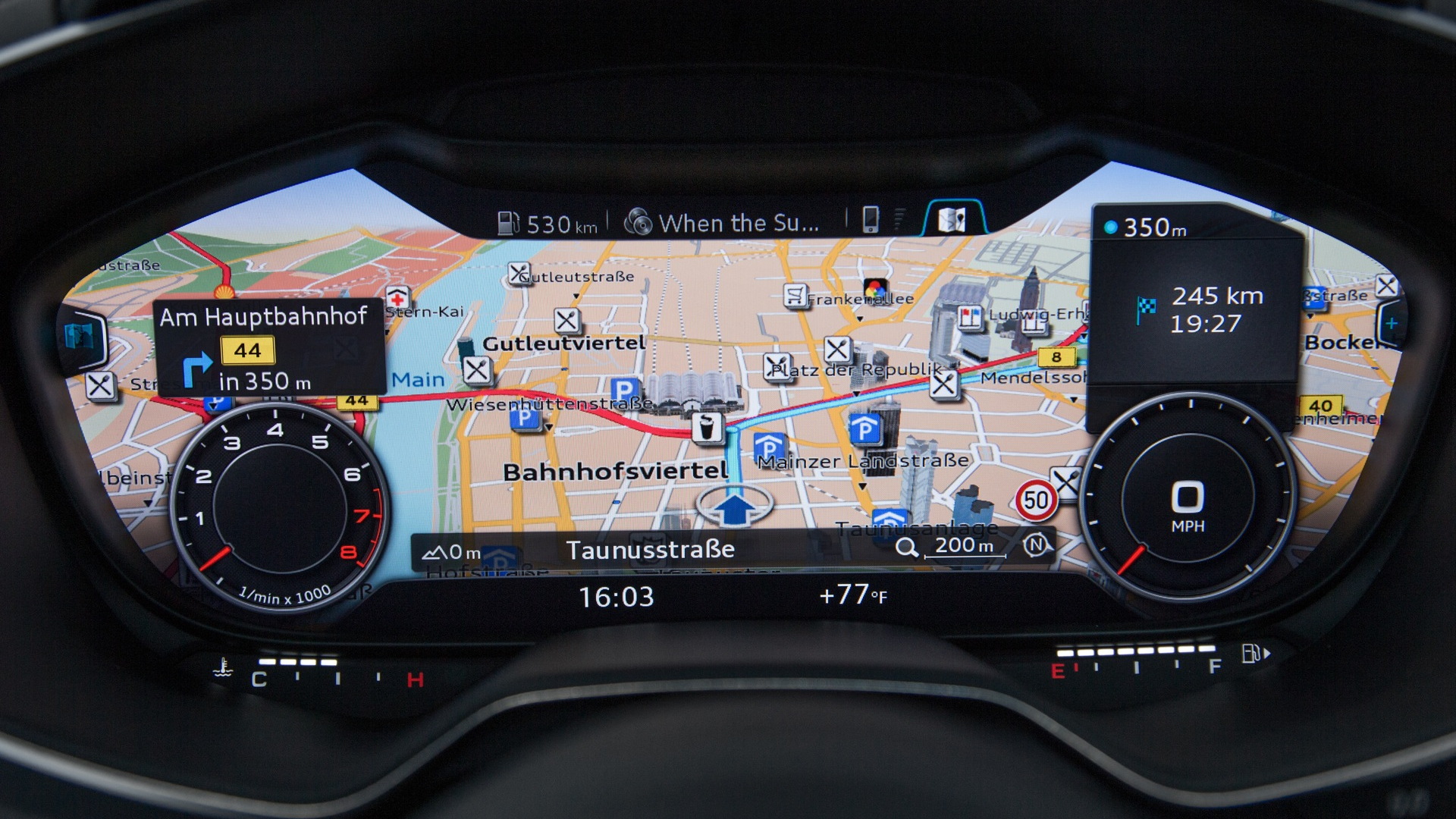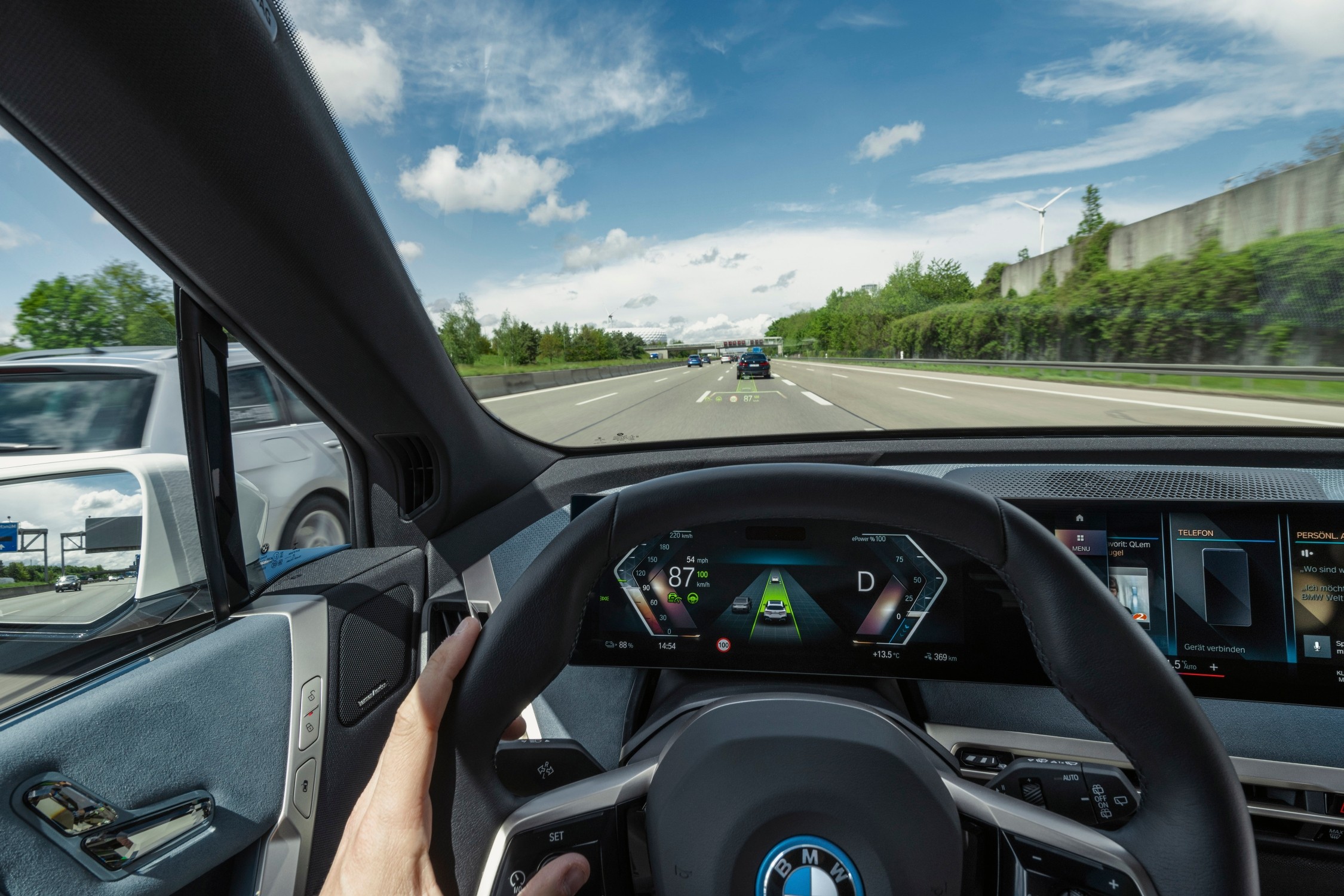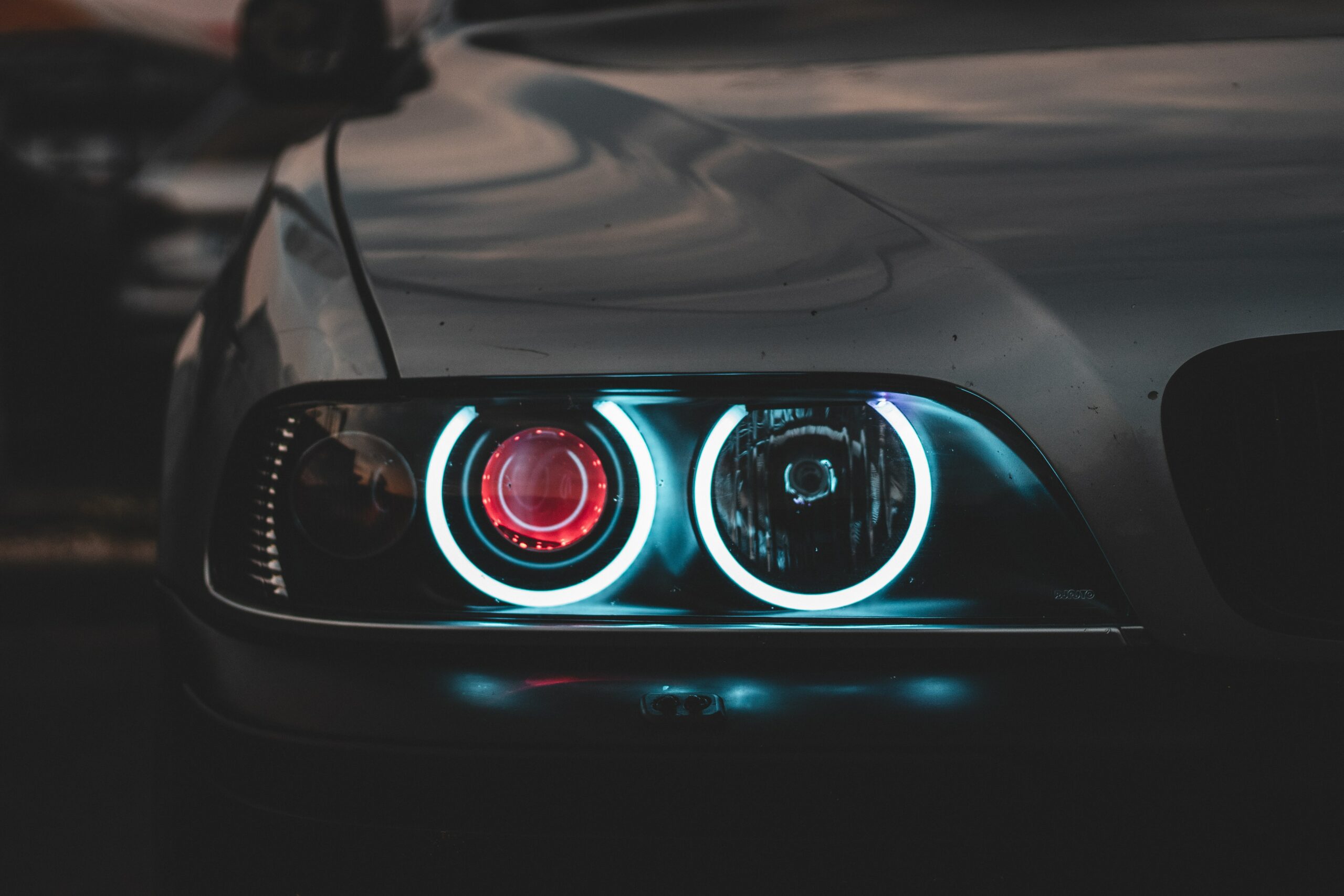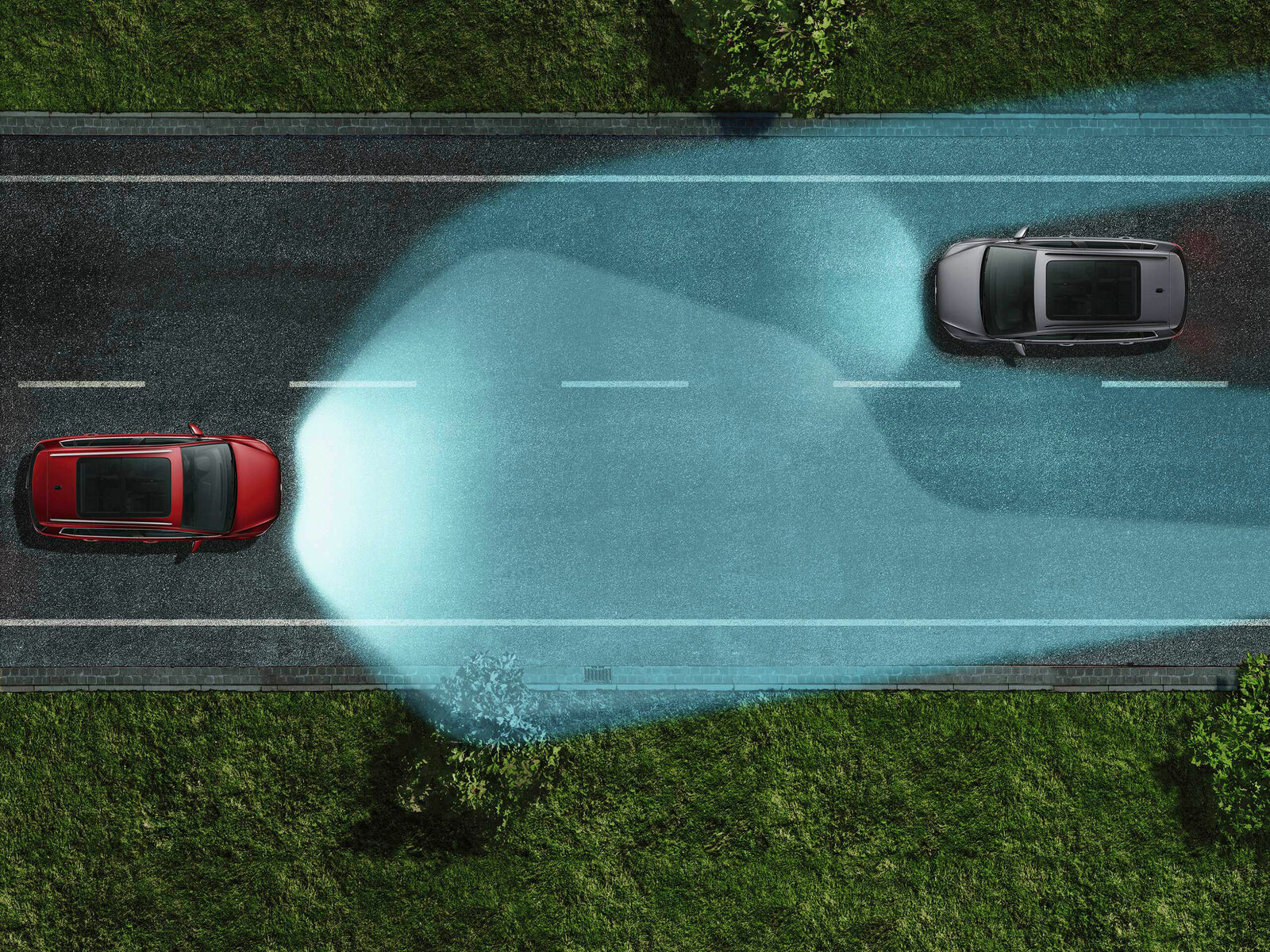Modern supercars incorporate a blend of advanced technologies designed to enhance performance, safety, efficiency, and the driving experience. Pushing the envelope has never just been about putting out the most ponies, but it’s about tying all of the design elements into an orchestrated symphony.
We’re not just talking about carbon fiber monocoques, tire technology (which is extremely cool in itself), or how many turbochargers are incorporated into an engine.
The Revuelto features a new 6.5-liter V12 engine, complemented by three electric motors that produce a combined power of 746.5 kW. Credit: Lamborghini
From the Lamborghini Revuelto’s triple electric motor to the Aston Martin Valhalla’s incorporated F1 technology, here are some of the most cutting-edge technologies you’ll find in today’s high-performance exotic for both on-track and street cars.
Hybrid Powertrains
Modern supercars have continued to experiment with hybrid powertrain systems which combine traditional internal combustion engines with electric motors to improve fuel efficiency and reduce emissions. Setting aside eco-friendly perspectives for a moment, these new powertrains offer several significant advantages:
The 50 HP Bosch Hybrid unit located inside the nose of the Type 963. Credit: Porsche
Dual Power Sources: Hybrid supercars use a combination of an ICE and electric motors. The ICE typically drives the rear wheels, while electric motors can power the front, rear, or all wheels, depending on the design.
Performance Enhancement: Electric motors can provide instant torque, improving acceleration. When combined with the high power of an ICE, you’ve got a rocketship on the asphalt.
Energy Recovery: Many hybrid systems include regenerative braking, which recovers energy usually lost during braking and stores it in a battery. This energy can later be used to power the electric motors.
The Porsche 963 LMDh Hypercar is a prime example of the above, and is also compatible with renewable fuels such as ethanol/hydrocarbon blended fuels and carbon-capture derived hydrocarbon fuels. Other exotics such as the Ferrari LaFerrari, Porsche 918 Spyder, and Aston Martin Valkyrie utilize such technologies for unprecedented performance.
Active Aerodynamics
Supercars are incorporating systems that dynamically adjust aerodynamic elements like spoilers, diffusers, and air intakes in real-time to optimize downforce and drag depending on speed and driving conditions.
The active aerodynamics on a T.50. Credit: Salon Prive
A great example is the ALA (Aerodinamica Lamborghini Attiva) system in the Lamborghini Huracán Performante. ALA adjusts flaps in the front splitter and the rear wing to manage airflow, reducing drag for acceleration and increasing downforce for cornering. Notably, the system can direct downforce to either side of the car during cornering, enhancing its agility and stability through turns.
Active Spoilers: These can extend or retract based on vehicle speed to alter downforce and drag. For instance, a spoiler might extend at high speeds to increase downforce, improving traction, and then retract at lower speeds to reduce drag and enhance fuel efficiency.
Active Air Intakes: These can open or close to control the cooling airflow to the engine and brakes, optimizing performance and efficiency.
Active Grilles: Found at the front of the vehicle, these grilles can open to allow more air to cool the engine and close to improve aerodynamics when cooling demand is lower.
Variable Geometry Turbines: Used in turbocharged engines, they adjust the flow of exhaust gases to the turbine, optimizing performance across the engine’s speed range.
Active Diffusers and Underbody Panels: These can adjust to modify the airflow under the vehicle, reducing drag and enhancing downforce.
Simulation of how active aerodynamics works on the Koenigsegg One. Credit: Top Speed
This technology isn’t limited to unattainable high-end supercars. For those who can afford the German marque, Porsche 911 Turbo models come with an active aerodynamic system known as Porsche Active Aerodynamics (PAA). This system includes a three-stage front spoiler and a deployable rear wing, which adjust automatically to balance downforce and drag. In ‘Performance’ mode, these elements maximize downforce for better handling and stability at high speeds.
Advanced Traction Stability Control Systems
Advanced Traction and Stability Control Systems in supercars monitor and adjust the distribution of power to the wheels, braking, and even the car’s dynamics to maintain grip and stability under various driving conditions.
The Ferrari SF90 Stradale uses an advanced version of Ferrari’s Side Slip Control (SSC) system, integrating it with the car’s hybrid powertrain to manage power delivery from both the V8 engine and three electric motors. The system ensures optimal traction by dynamically distributing torque not just between the front and rear axles but also individually across the rear wheels, maximizing grip and handling performance.
The Koenigsegg Agera R has some amazing features in its traction stability control system. Credit: Koenigsegg
Similarly, Porsche equips the 911 GT2 RS with Porsche Stability Management (PSM) and Porsche Traction Management (PTM), systems that provide dynamic stability and traction control. These technologies are fine-tuned to handle the extreme power of the GT2 RS, offering drivers the ability to exploit the car’s capabilities while maintaining a high level of safety and control, especially important given the vehicle’s rear-engine layout.
Active Suspension Systems
These systems can adjust the damping characteristics of the suspension in real-time, adapting to road conditions and driving dynamics to offer both superior comfort and handling.
The McLaren 720S employs this technology in the form of sensors to monitor the car’s behavior and adjust the dampers accordingly, providing a smooth ride over bumps and exceptional handling at high speeds.
Likewise, the Lamborghini Aventador SVJ uses a combination of active and passive suspension elements, including Magneto Rheological Suspension (MRS) that can adjust the damping effect almost instantly based on road conditions and driving dynamics.
Digital and Augmented Reality Dashboards
The interiors of supercars are becoming more high-tech, with digital displays replacing traditional gauges and instruments. Some cars also feature augmented reality systems that can project information like navigation, speed, or racing lines directly onto the windshield. The merging of virtual information with the physical driving experience continues to blur the line between high-performance driving and interactive technology.
The Lamborghini Revuelto digital instrument dashboard. Credit: Lamborghini
The Audi e-tron GT features the Audi Virtual Cockpit, a fully digital instrument cluster that offers high-resolution displays of navigation, media, and performance metrics. Though not augmented reality in the traditional sense, its advanced digital display can be customized to show a wide range of data, enhancing the driving experience with a focus on electric performance.
Audi’s Virtual Cockpit. Credit: Motor Authority
Porsche’s team developed the Porsche Advanced Cockpit and the optional Passenger Display, featuring a fully digital and customizable interface, used in the Taycan. This augmented reality HUD (Head-Up Display) projects critical information such as speed, navigation, and alerts directly onto the windshield, providing a real-time, augmented view of the road ahead.
Honorable Mention: Advanced Driver Assistance Systems (ADAS)
While supercars focus on performance, many now include safety features such as adaptive cruise control, lane-keeping assist, and collision detection systems, enhancing the safety of both the driver and passengers.
The 2nd generation Tesla Roadster will incorporate Tesla’s Autopilot and potentially Full Self-Driving (FSD) capabilities. These systems offer advanced features like auto-steering, traffic-aware cruise control, automatic lane changes, autopark, and summoning the car from a parking spot (James Bond, anyone?).
BMW iX Advanced Driver Assistance Systems. Credit: BMW
We wanted to include this in the list as a mention but we believe that technology shouldn’t replace the exhilarating experience of driving a high-performance supercar.
At the same time, incorporating ADAS technologies represents a merging of worlds, where high-speed exhilaration meets cutting-edge safety and comfort features. It’s almost unavoidable as tech advances, and we’re keen to see how it unfolds.
What’s Next?
These technologies not only push the envelope of automotive performance but also improve the practicality and sustainability of supercars, making them more than just fast cars—they’re showcases of the pinnacle of automotive engineering and design.
While some of this technology is reserved for the upper echelons that is supercars with top-notch performance, some of it eventually trickles down into the consumer segment of cars. For instance, automotive headlights are a good example as more vehicles incorporate laser headlights or Dynamic Light Assist in Volkswagen cars to help improve visibility on the road.
This system automatically adjusts the high beam headlights, turning them on when the road is clear and dimming them when it detects other vehicles, ensuring optimal illumination of the road without causing glare to other drivers. It can also selectively dim only certain areas of the high beam that would otherwise blind oncoming drivers or those in front, while maintaining high beam illumination in other areas.
Volkswagen’s Dynamic main-beam control and Dynamic Light Assist. Credit: VW
Lastly, some versions of Dynamic Light Assist also incorporate adaptive lighting features, where the headlights adjust their beam pattern based on the vehicle’s speed, steering angle, and other factors. At low speeds, the system may provide a wider beam to illuminate more of the roadside, whereas at higher speeds, the beam might be longer and narrower to illuminate the road further ahead.
With the continual advancement of hybrid and EV technology, we might not get all of the cool goodies like active aerodynamics in a Honda Civic (for now, anyway), but the future proves to be exciting as it is all part of a broader trend in technology within the vehicles we drive.

